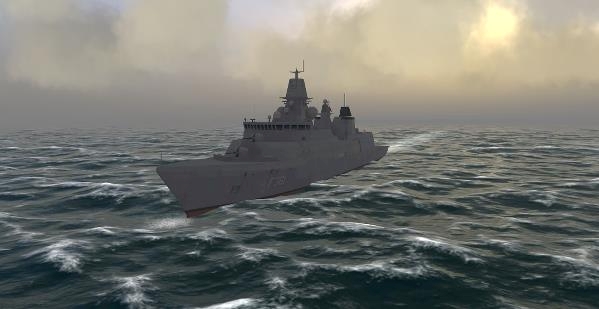IRAS Naval Radio Trainer
Naval Base Frederikshavn (Royal Danish Navy)
Realistic equipment with realistic communication experience
An operator in the IRAS Naval Radio Trainer is assigned a rack of communication equipment and placed somewhere in the world. Now he/she must configure the communication equipment correctly to fulfill his/her role in the exercise. With the correct set up of the equipment, the operator can get in contact with fellow operators and communication can take place. Prior to execution of an exercise, an instructor has defined the exercise or loaded one from a library. Defining an exercise includes determining which devices are assigned to which operators, how is this equipment interconnected, and where are the operators located.
The main goals for the IRAS Naval Radio Traner is to give the operator easy acces to hands on experience. Another benefit is to give the operator the ability to perform operations that cannot be made on live equipment, e.g. to send a DISTRESS call from GMDSS (Global Maritime Distress and Safety System) radio.
The picture above shows one of two class rooms with 24 operators each. Up to two instructors can participate in the same exercise, or they can divide the operators between several exercises.
IRAS Naval Radio Trainer is not an ordinary computer based training (CBT) system. The operator simply gets access to the simulated equipment which he/she mostly operates as if he/she was technically responsible in a live radio room.
Hands on
The job for the operator is straight forward: select a device from the rack and perform the appropriate operation.
The devices (radios, power supplies, modems and amplifiers) are operated using a touch screen. Switches are toggeled, buttons are pressed and knobs are turned just by press and drag. Mechanical parts are also controlled by touch technology.
Great care has been taken to make devices appear and act as lifelike as possible.
Managing the exercise
The instructor defines which devices to assign to which operator. A situation map gives the instructor an overview over the locations of all the operators.
During the exercise the instructor monitors the states of the operators' active devices. Information about a radio includes basic information as power on, receiving, transmitting, frequency, modulation and volume level but also information about advanced configuration, e.g. settings for HaveQuick or ALE (Automatic Link Establishment). The monitor facilities allow the instructor to check whether an operator has controlled his/her system correctly.
In the picture above, the instructor has assigned a rack with radios for own use making it possible to participate in the communication with the operators under equal conditions. In any case, the instructor can always connect to an operator via intercom.
The instructor can have the operators' position presented on the situation map together with propagation circles telling when a transmitted signal will reach at certain level.
The instructor might also define geostationary satellites with allocated uplink and downlink frequencies. The operator will with a correct radio setup be able to transmit and receive via the satellite.
The area covered by the satellite can also be shown on the situation map, and the instructor can define the delay involved with the satellite communication. By changing the position of the operators (on the map), the instructor can improve or degrade the quality of the transmission between the operators forcing them to take appropriate decisions.
Radio simulation features
Basically, the operator learns to operate the radios. For advanced radios, the necessary subset of features defined by the customer are also simulated.
Examples of simulated features:
- Communication over HF, VHF, UHF and Satcom
- Noisy communication at low signal quality, both analog and digital
- Setting up frequencies and radio channels (for receive and transmit)
- Adjusting volume and squelch
- Setting up connected devices as power supply, amplifiers and modems
- Setting up internal or external modems
- Composing and exchanging Digital Selective Calls including sending and receiveing DISTRESS
- Loading crypto keys and selection of crypto algorithms
- Setting up advanced wave forms, such as HaveQuick and ALE
- Loading network configurations into advanced radios
- Sending email via data radios
- Setting up digital communication for satellite links.
Simulated Devices
A variety of devices have been simulated, mostly radios but also power supplies, amplifiers and modems, even PC applications for programming radios have been simulated. The majority of the radios have been simulated (emulated) to include almost all radio functionality, thereby offering the student an almost perfect communication experience.
More information about radios emulated by IFAD is available (here >)


